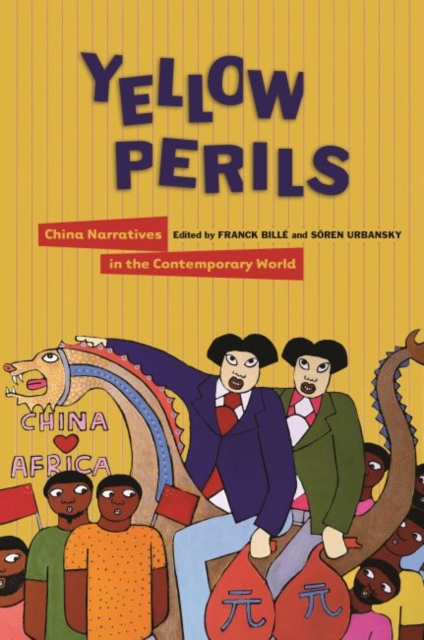
Yellow Perils : China Narratives in the Contemporary World Hardback
Edited by Franck Bille, Soren Urbansky
Hardback
Description
China’s meteoric rise and ever expanding economic and cultural footprint have been accompanied by widespread global disquiet.
Whether admiring or alarmist, media discourse and representations of China often tap into the myths and prejudices that emerged through specific historical encounters.
These deeply embedded anxieties have shown great resilience, as in recent media treatments of SARS and the H5N1 virus, which echoed past beliefs connecting China and disease.
Popular perceptions of Asia, too, continue to be framed by entrenched racial stereotypes: its people are unfathomable, exploitative, cunning, or excessively hardworking.
This interdisciplinary collection of original essays offers a broad view of the mechanics that underlie Yellow Peril discourse by looking at its cultural deployment and repercussions worldwide. Building on the richly detailed historical studies already published in the context of the United States and Europe, contributors to Yellow Perils confront the phenomenon in Italy, Australia, South Africa, Nigeria, Mongolia, Hong Kong, and China itself.
With chapters based on archival material and interviews, the collection supplements and often challenges superficial journalistic accounts and top-down studies by economists and political scientists.
Yellow Peril narratives, contributors find, constitute cultural vectors of multiple kinds of anxieties, spanning the cultural, racial, political, and economic.
Indeed, the emergence of the term “Yellow Peril†in such disparate contexts cannot be assumed to be singular, to refer to the same fears, or to revolve around the same stereotypes.
The discourse, even when used in reference to a single country like China, is therefore inherently fractured and multiple. The term “Yellow Peril†may feel unpalatable and dated today, but the ethnographic, geographic, and historical breadth of this collection—experiences of Chinese migration and diaspora, historical reflections on the discourse of the Yellow Peril in China, and contemporary analyses of the global reverberations of China’s economic rise—offers a unique overview of the ways in which anti-Chinese narratives continue to play out in today’s world.
This timely and provocative book will appeal to Chinese and Asian Studies scholars, but will also be highly relevant to historians and anthropologists working on diasporic communities and on ethnic formations both within and beyond Asia.
Information
-
Available to Order - This title is available to order, with delivery expected within 2 weeks
- Format:Hardback
- Pages:280 pages, 6 black & white illustrations
- Publisher:University of Hawai'i Press
- Publication Date:30/07/2018
- Category:
- ISBN:9780824875794
Information
-
Available to Order - This title is available to order, with delivery expected within 2 weeks
- Format:Hardback
- Pages:280 pages, 6 black & white illustrations
- Publisher:University of Hawai'i Press
- Publication Date:30/07/2018
- Category:
- ISBN:9780824875794






